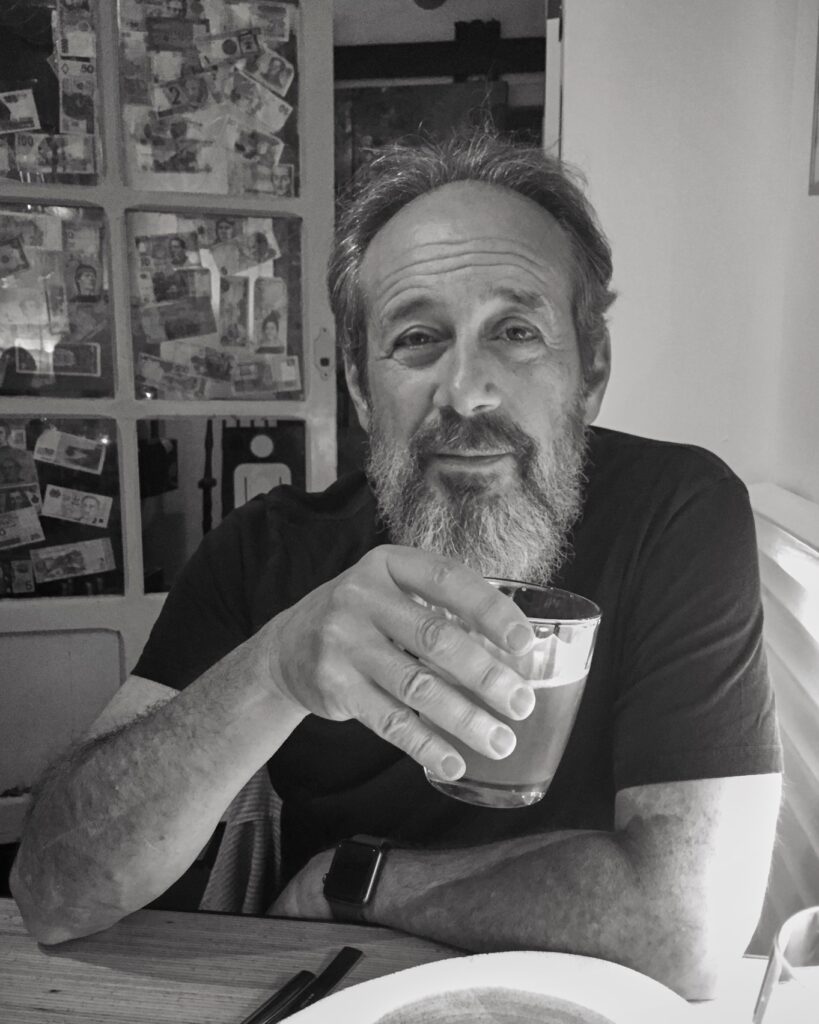Rick Schatzberg’s “The Boys” Combines Photography and Memoir
By Michael Selleck

Looking at old photos from my youth is like eating comfort food. There‘s something about the brownish tint of the old color processing that’s like a magical haze. A recognition of people and places—some long gone—of a certain time. The friendships, the feelings of both invincibility and insecurity. A time capsule of sorts that raises the question, What happened to all that?
Rick Schatzberg explores this magical haze in his new book, “The Boys.” Part memoir and part photo essay, “The Boys” is an intimate look at friendship over almost fifty years—and what those years may tell us about ourselves. Schatzberg juxtaposes his contemporary portraits of a group of men that he has been friends with since junior high school with snapshots mostly from the 1970s. They all grew up together in postwar suburban Long Island in “look-alike homes in grids,” a “geography of nowhere” that shaped their lives and made them who they are today. In the photographs from the past, we see these men in their youth, spirited, yet filled with a feeling of innocence, a hunger for excitement and an anticipation of what comes next. These photos left me a little homesick, having grown up in the same period. I am wondering whatever happened to my friends David, Jeff, Roy, Bob, Dennis and Robby.
The contemporary portraits are somewhat jarring, as they reveal an inner truth that is not necessarily evident in the smiles and gestures of the older photos. All of The Boys agreed to be photographed shirtless, baring themselves to the eye of the camera, leaving the reader awestruck at their braveness. We look at each other today in middle age and still feel and see the persons of our youth. We know ourselves so well that the essence of being who we are is always there. We look at a picture and search for the clues of the younger person, but we are who we are and that is how we know ourselves. Still in our youth even though our age advances. Schatzberg writes, “There is an eternal presence in a photograph, but I see past, present, and future all at once. . . . We have a sense of an ongoing self, only memories and character traits that infer continuity.”
“The Boys” also explores loss, and by the end of the book, we learn that some of his subjects have passed away. Schatzberg writes that death in some way allows one to see the person more clearly. Looking back at the older photographs, I see nothing but the delight of youth; playfulness and a joy of a life being lived. How could we ever see through those smiles that a life would be shortened? Maybe as we get older death becomes part of our thinking process, something we now expect and accept.
Rick Moody provides an excellent introduction that is inserted into the inside back cover of the book. He writes about the relationship between photography and writing and “the kind of expansive power that we associate with narrative activity.” He clearly loves the project and provides a comfy armchair to the soul of Schatzberg’s project. He has learned the value of a picture through time and writes, “Schatzberg’s intimate and honest photos of these men are not only about what they will mean now, but also about what they will mean later.” We live within an aging process, as is evident in the photographs from the 1970s. Moody observes that Schatzberg “has created his eulogy for both a youth long gone, and for the deaths of friends and loved ones yet to happen, his own included.”
I had a thought about how raucous some of the action must have been around the older photos compared to the silence of the new portraits, all of which were shot using a large-format camera. The memory of youth as merely living life versus men celebrating life.
Even though The Boys are all grown men, and their time spent is evident in the contemporary portraits, we can still see the cockiness of youth shining through. A testament to the photographer and the bonds of friendship, or what Moody calls “the enduring loyalty among friends.”
“The Boys” is a beautifully designed book. The covers and end papers are photographs of what must have been “The Pits,” a “sacred wilderness” they escaped to in the middle of their suburban oasis. The contemporary portraits are tucked within gatefolds of the older photos, which gives the reader a chance to put youth and age side by side.
“The Boys” is a memoir that unfolds like poetry. Images and words beautifully tied together, as life itself.
Rick Schatzberg’s “The Boys,” with an afterword by Rick Moody, is published by powerHouse Books, 2020.
